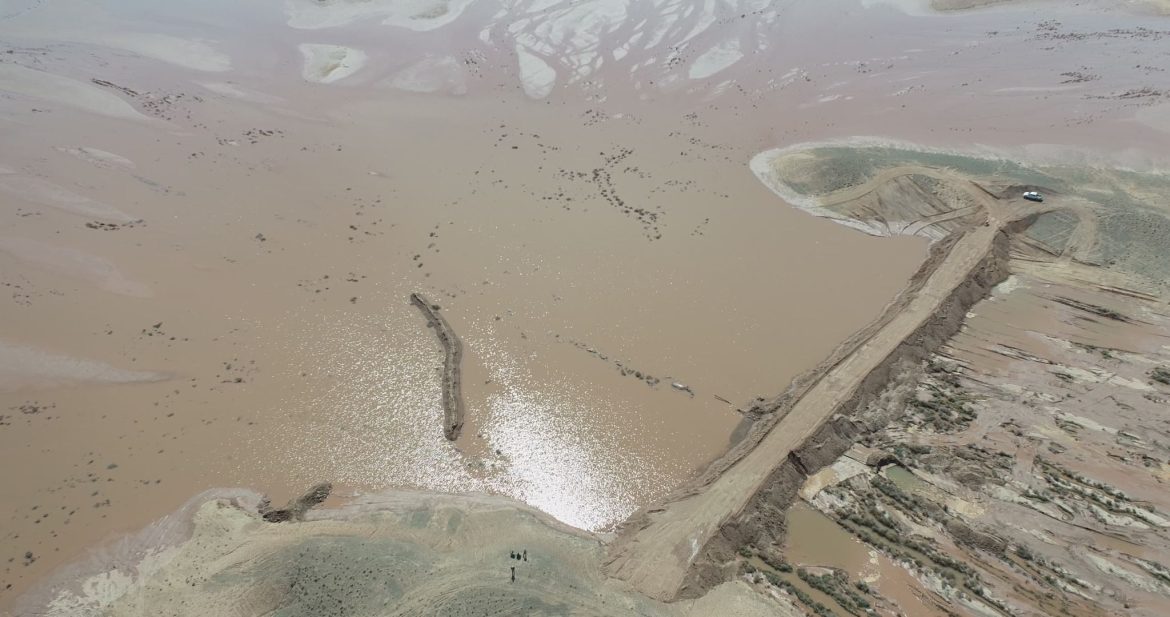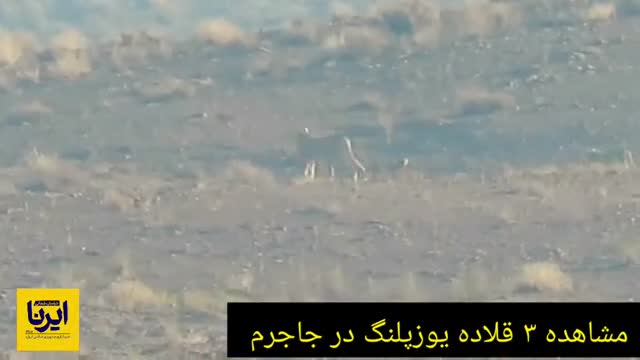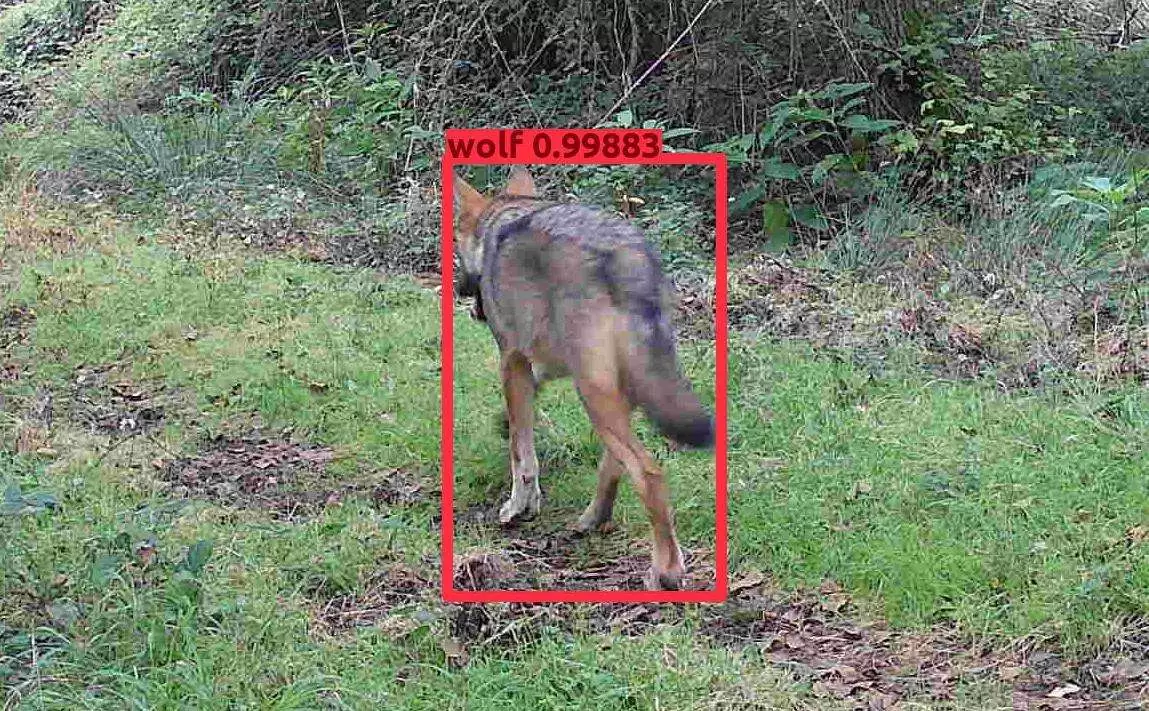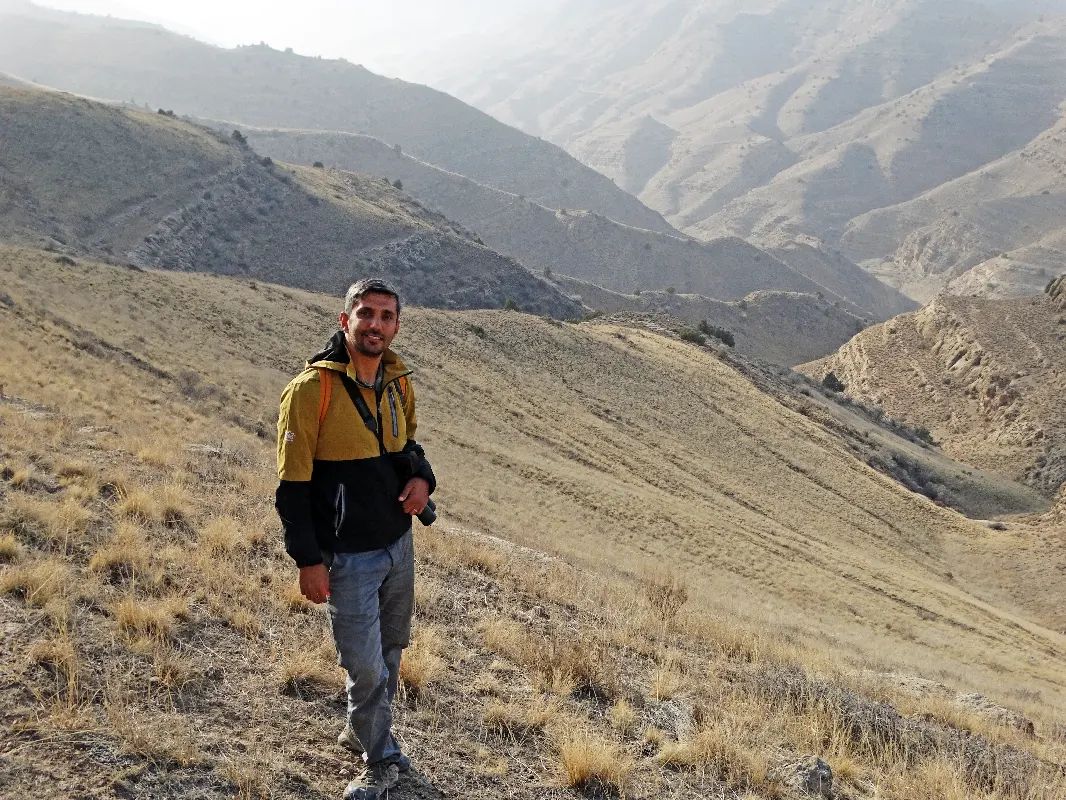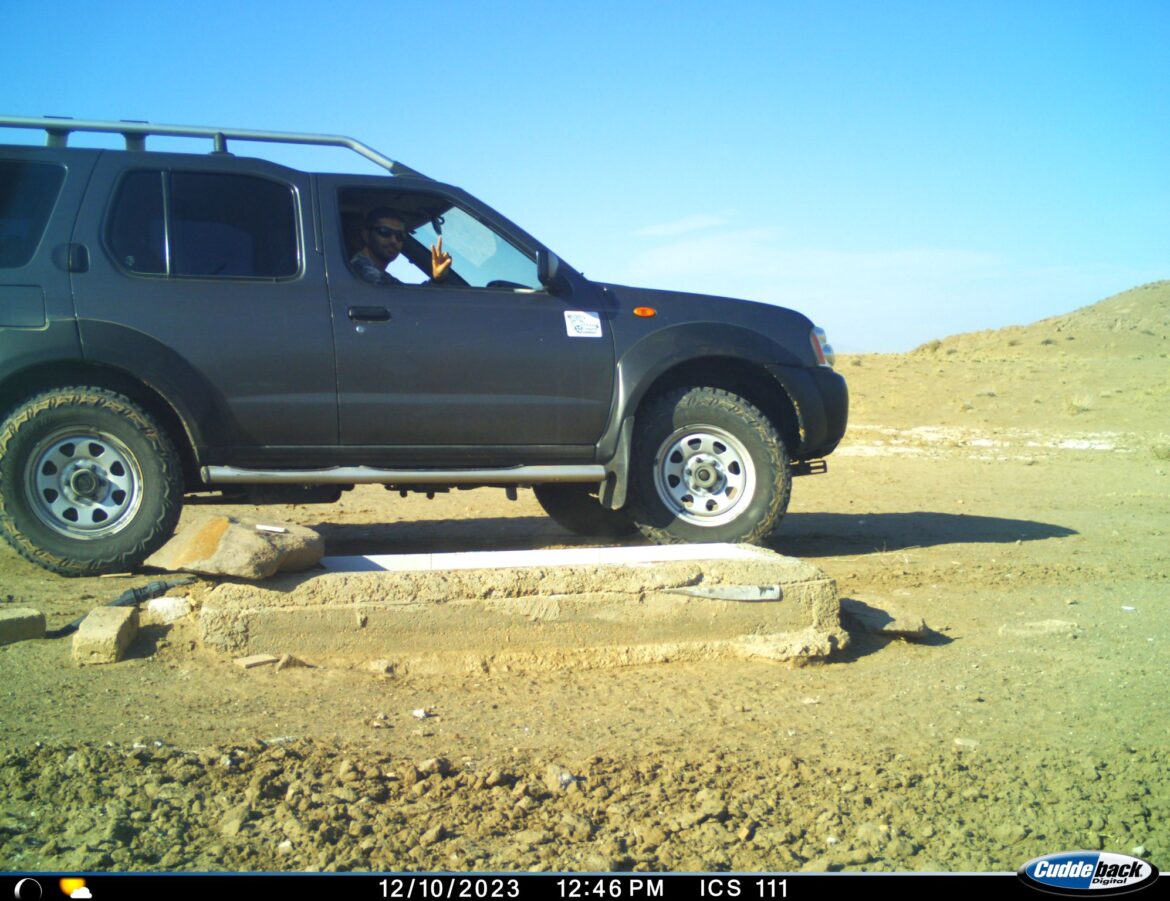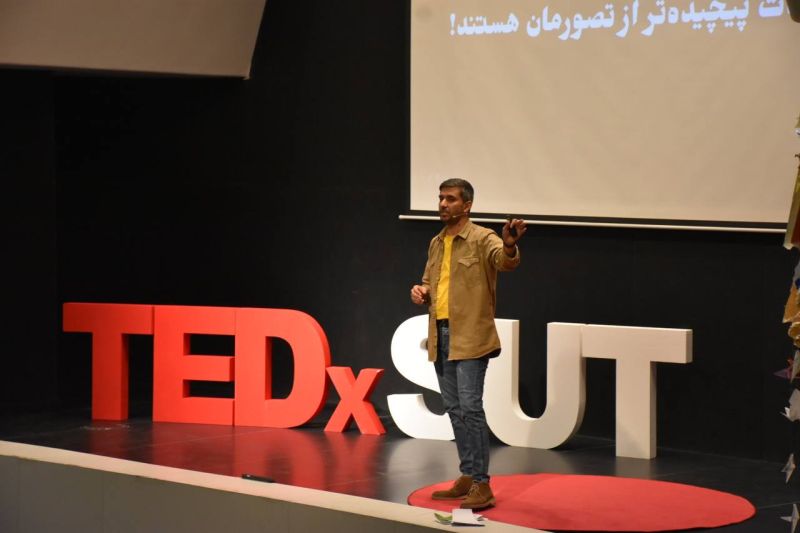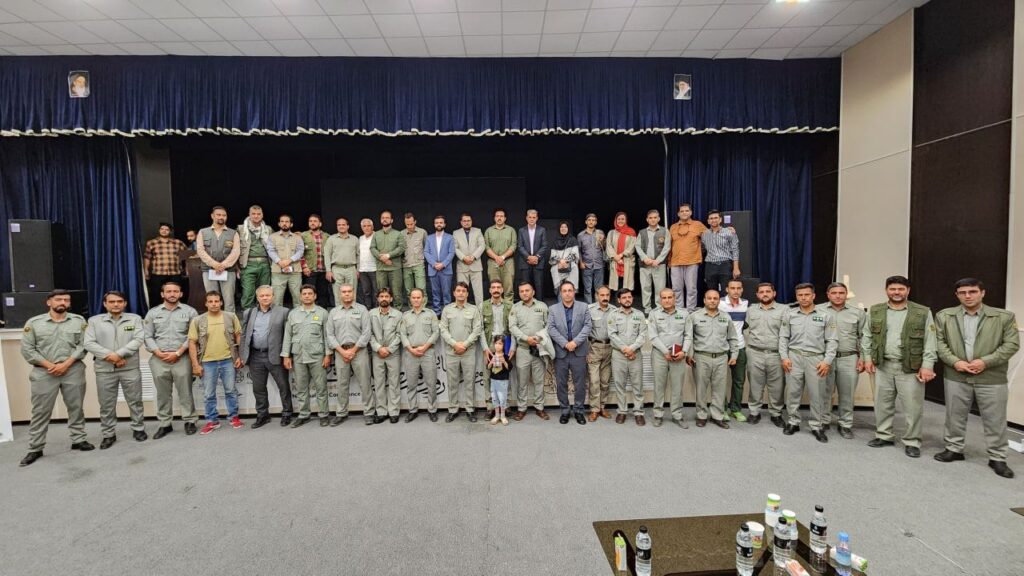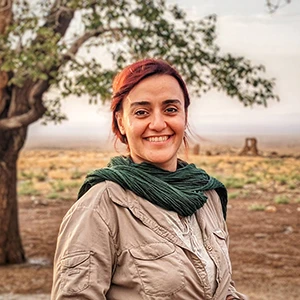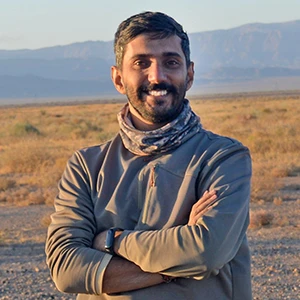If you’ve ever felt left behind by challenges out of your control, please know you’re not alone.
This past year, I faced a different kind of challenge: I couldn’t even set foot in the protected area where I’ve spent so much of my life and career. It was frustrating, even painful. At first, checking LinkedIn and seeing others’ progress only made the feeling of “being left behind” heavier. That reality was tough to accept.
But this forced pause gave me a chance to reflect and learn. My perspective shifted from focusing on just one species, like the Asiatic cheetah, to seeing the broader, more interconnected landscape. With my colleagues at Sarvin Wildlife Conservation, we started designing a program to restore the wider areas, especially those outside the borders of governmental protected areas, where people and wildlife coexist and both need more help.
I’ve learned that real resilience isn’t just about persistence or hard work. It’s also about accepting vulnerability and understanding that not every obstacle can be overcome simply by trying harder or gaining new skills. Sometimes, the journey itself, complete with setbacks and lessons, is what shapes us most. Now, as we prepare to launch a new desert habitat restoration project, I’m grateful for both the challenges and the opportunities for growth that came with them.
The marks left by this period are still with me, but so are the insights. Talking openly about failure, burnout, and feeling left behind shouldn’t be taboo. I think it’s important to normalize talking about failure, burnout, and doubt. These experiences are real, and they matter. I hope sharing this helps normalize setbacks and encourages support through every phase, not just the victories.
Morteza Pourmirzai
Morteza Pourmirzai
I am a dedicated wildlife conservationist with 17 years of experience, driven by a passion for preserving the natural world and its most vulnerable species. My journey began in 2007 as a volunteer with the Iranian Cheetah Society (ICS), where I quickly became involved in roles such as Public Relations Manager and Education and Participation Manager. This hands-on experience deepened my understanding of wildlife conservation challenges, especially in a region facing severe environmental and political issues. In 2018, I was honored to become CEO of the ICS, a position I held until June 2024. As I continue my journey, I am eager to explore new opportunities to further my impact. I am committed to making a meaningful difference in wildlife conservation and look forward to connecting with like-minded professionals who share this vision.
I’m honored to be featured in the latest issue of Biodiversity MAG, where I shared an in-depth conversation on the challenges of conserving the Asiatic cheetah in Iran, the urgent threats we face, and the practical steps that could help ensure the species’ survival.
In this interview, I also introduced our new organization, Sarvin Wildlife Conservation, and its mission to protect Iran’s big carnivores, restore degraded habitats, and strengthen community-based conservation efforts.
Innovative Water Management Transforms Desert, Raises Gazelle and Wildlife Numbers
In 2019, while visiting Iran, Simone Eckhardt received an idea from a ranger to build dams to control floods, improve water accessibility, and promote vegetation growth in the desert. This innovative water management has significantly benefited desert wildlife. Innovative water management desert wildlife efforts have shown positive results. After a few years, the impact of this initiative is evident. Not only has water been reserved for local wildlife and migratory birds throughout the year, but the population of gazelles, the main prey for cheetahs in the region, has also reached its highest recorded number, increasing from 1000 to about 5000 in just 6 years. Innovative water management desert wildlife projects like this are crucial for maintaining ecological balance. This success was made possible through investment in trial and error, along with initial funding from Stichting SPOTS, and by placing trust in the ideas of the rangers working on conservation efforts. Now, we are preparing to expand the idea to other habitats of Asiatic Cheetahs! Innovative water management for desert wildlife is key to future conservation efforts. 🤞
Protecting a species on the brink of extinction—fewer than 20 remain in the wild—comes with unique challenges. Achievements are rare, and discouragement often looms large. Striking a balance in such conditions is tough. You must cherish the small victories while ensuring setbacks don’t stop you.
Today, I want to share one of those small yet extraordinary victories that renewed our energy and gave us hope!
Six years ago, tragedy struck in one of the two areas home to the last remaining Asiatic cheetahs. Our last known cheetah in that region was killed in a road accident. The loss was devastating, leaving us deeply worried about the future. Still, we persevered. Year after year, we set up camera traps with the hope of spotting a cheetah, only to leave with nothing.
We trained rangers, scouted the surrounding areas, engaged local communities, and worked alongside them.
The head of the park once said: “We protect this area as if cheetahs are still here.” And with diligent conservation efforts, the gazelle population quadrupled in just six years!
This park director was experienced, passionate, and deeply committed. Together, we implemented a comprehensive conservation strategy. We tackled climate change impacts, restored vegetation, enhanced prey availability, and secured water for wildlife. Rangers and the park director were on the frontlines of this six-year endeavor, while we and our sponsors supported them by providing resources, training, and motivation—often when we were struggling to stay hopeful ourselves.
Last year, at the National Cheetah Day event, I told them: “Everything here is ready for the cheetahs to return. Stay hopeful and stay prepared.”
And then, just days before this year’s International Cheetah Day, at a moment when we were teetering on the edge of despair, I woke up to a message from the park director:
“This morning, we captured photos of a cheetah mother and her two cubs in Miandasht!”
What a Morning!
The collective efforts of countless individuals had finally borne fruit. For the first time in the history of Asiatic cheetah conservation in Iran, cheetahs had returned naturally to a region where they had once vanished. And we celebrated this monumental achievement.
Conservation means persistence, resilience, and unwavering effort. In Miandasht, we gave it everything we had—and it was worth it. 🌱🧡
This was one of the last but not least activities we did while I was with the Iranian Cheetah Society. It’s definitely one of the most important tasks we undertook. With the help of Peter van Lunteren at Addax Data Science, we incorporated a significant number of Iranian species, particularly desert species, into an artificial intelligence model. This means that Iranian researchers, who previously had to spend countless hours sorting through hundreds of thousands of images captured by camera-traps, can now use this model to easily categorize the images as they wish. By inputting all the camera images into the software, they can receive them categorized by species. This model is now available for FREE and supports the following category of species:
- Antilope
- bird
- camel
- caracal
- cat
- cheetah
- equid
- fox
- goat+sheep
- hyena
- leopard
- porcupine
- wolf+jackal
Peter was generous enough to provide this service for free due to the sanctions and financial difficulties in Iran. Thanks to this artificial intelligence model, the classification of images will now be much faster for large projects, such as monitoring the population of Cheetah, which can produce several hundred thousand images per year. This means fewer hours by computer and more hours on the field!
. For installation instructions, please visit the Addax website.
I’m excited to share that Atie Taktehrani and I were featured in the recent issue of Ubuntu Magazine, a publication dedicated to wildlife and conservation awareness.
This 10th edition, celebrating their first anniversary, is filled with stories and pictures highlighting the importance of protecting wildlife. We had the opportunity to contribute to this crucial mission by sharing our knowledge about Asiatic cheetah conservation efforts in Iran.
A huge thank you to Manon Verijdt, CEO and Founder of Ubuntu Magazine, for providing a platform to spread awareness about this beautiful and endangered species.
I encourage everyone to check out Issue 10 HERE.

Many of you know me as the CEO of the Iranian Cheetah Society for the past six years. It’s with a mix of emotions that I share news of my departure. While my contract has come to an end, a more fundamental difference in vision has emerged.
I joined the ICS in 2008, as a university student fueled by a passion for conservation. Over the years, I’ve worn many hats – educator, manager, and advocate. In 2018, during a time of immense challenge for Iranian conservation, I was entrusted with the leadership of the ICS.
Those were difficult years. Arrests of conservationists cast a long shadow, and international funding dried up due to sanctions. The pandemic added another layer of hardship. Yet, through it all, our team persevered.
We knew saving the critically endangered Asiatic cheetah, with a population of fewer than 30, was a monumental task. It required a collective effort, a chorus of voices from Iran and the world. Despite the obstacles, we achieved remarkable progress. A Safe Haven: With IUCN NL support, we secured a 5600-hectare pasture, a refuge for cheetahs.
Enhanced Monitoring: We expanded our network of camera traps, gaining invaluable insights into the cheetah situation, funded by Stichting SPOTS.
Empowering Rangers: Increased ranger numbers, improved equipment, and better rations ensured their safety and effectiveness funded by Ahmad Tea, Elite, Stichting SPOTS, etc.
Building Knowledge: Capacity-building workshops fostered a culture of conservation within local communities.
These are just some of the accomplishments that wouldn’t have been possible without your unwavering support. A special thank you goes to Simone Eckhardt, CEO of Stichting SPOTS, who has been more than a colleague – a friend who stood with us through thick and thin.
While I step away from the ICS, my commitment to the Asiatic cheetah and Iranian wildlife remains steadfast. I’ll be taking a short break to recharge, but the fire within continues to burn. I’ll be seeking new opportunities to contribute to this vital cause.
The fight for the Asiatic cheetah is far from over. But with continued dedication, this magnificent creature can have a future.
It has been 17 years since I entered the world of wildlife conservation as a volunteer and then as a professional. I have experienced many hardships, joys, failures, and successes alongside the groups I have worked with. Wildlife conservation was never meant to be easy, let alone in a country that has been severely sanctioned for 50 years and has a totalitarian government.
Although we have often grown tired, paused, and then resumed, I have been thinking about this question lately: When should we give up? While we always fail, how far should we go and at what cost should we continue? PayPal recently blocked our account for receiving donations, due to sanctions.
Also, Mailchimp, closed our account without any warning, solely because we are Iranian, without allowing us to back up the 20-year-old database of subscribers and recipients.
Although humanitarian and environmental activities have never been sanctioned by the U.S. government, service providers refrain from cooperating with Iran. Worse still, they do not behave professionally or respectfully towards us, or perhaps we simply do not matter.
Every year, the number of international organizations interested in collaborating with us decreases, and obtaining foreign financial resources has become almost impossible.
On the personal front, due to a lack of financial resources, we have always had difficulty paying salaries, and currently, not even one full-time employee remains for the Iranian Cheetah Society.
Thinking about a situation where the government has no interest in nature conservation, and we are under pressure inside the country, and while the Asiatic cheetah is on the brink of extinction, continuing seems impossible.
We met with rangers and local communities in the cheetah habitat. They are also extremely tired and hopeless. We tried to give energy to them, but in reality, we were also spending our last shreds of hope and energy.
A few months ago, among specialists in cheetah conservation in Ethiopia, among those who face much fewer and more solvable problems, I found about how meaningless the path we have taken seems. Even the cheetah conservationists asked us “Why do you still continue? You have no chance!”
Last week, after a problem arose with our PayPal account, I couldn’t sleep for several nights. The moment we received the final email stating that our account was being permanently closed, I thought about whether we deserved this level of failure, despair, and stress. How long should we endure all this and continue? Where is the stopping point? When, after various harms from all sides, our mental health is severely threatened and stress and pressure have taken away our ability to work, where is the END?
Now, I think more seriously about giving up, and I imagine that after all these years, we are on the verge of losing our beautiful cheetah and facing final defeat. Without hope, without motivation, and without a future.
Last week, I had the honor of speaking at a TEDx event at Sharif University. My speech, titled “Running in the Darkness for the Asiatic Cheetahs,” was a deep dive into the challenging journey of trying to save the world’s most rare wildcat in a sanctioned country.
Despite the lack of budget, equipment, and comprehensive understanding of these majestic creatures, our team has been relentless in our pursuit. We are racing against time, working in the shadows to ensure the survival of the Asiatic Cheetahs, who are teetering on the brink of extinction.
Our journey has been one of resilience and hope. With limited resources, we have strived to understand these elusive creatures better, to devise effective conservation strategies. Our persistence stems from the fact that these cheetahs don’t have much time left. We have no choice but to stay hopeful because if we lose hope, even for a moment, they may be lost forever.
I am incredibly grateful for the opportunity to share our story and raise awareness about the plight of the Asiatic Cheetahs. Let’s all remember that every effort counts, no matter how small, in the grand scheme of conservation.
I had the honor of presenting at the second National Iranian Cheetah Day conference in Jajarm County, where I shared the latest findings and challenges of our research on the Asiatic Cheetah, a critically endangered species that lives only in Iran. The conference which was hosted by local communities of Asiatic Cheetah habitat, was a great opportunity to exchange ideas and experiences with other environmental activists, officials, experts, and enthusiasts who are passionate about protecting this unique and magnificent animal. I learned a lot from the discussions and feedback, and I was inspired by the dedication and enthusiasm of everyone involved.
One of the main messages that I wanted to convey in my presentation was the importance of sharing conservation outcomes, obstacles, and success stories with all stakeholders and among local communities. The Asiatic Cheetah faces many threats, such as habitat loss, human-wildlife conflict, and climate change. To address these challenges, we need to work together with the government, researchers, rangers, farmers, herders, NGOs, media, and the public. We need to raise awareness and educate people about the value and beauty of this species, as well as the benefits of coexisting with it. We need to create incentives and opportunities for local people to participate in conservation efforts and benefit from them. We need to celebrate and appreciate the achievements and efforts of those who are working hard to protect this species.
I believe that by sharing our knowledge, experiences, and stories with each other, we can create a stronger and more effective network of conservationists who can make a difference for the Asiatic Cheetah. I hope that this conference will be a catalyst for more collaboration and communication among all those who care about this species. I also hope that it will inspire more people to join us in our mission to save the Asiatic Cheetah from extinction.
Together, we can make a difference! 🐆



